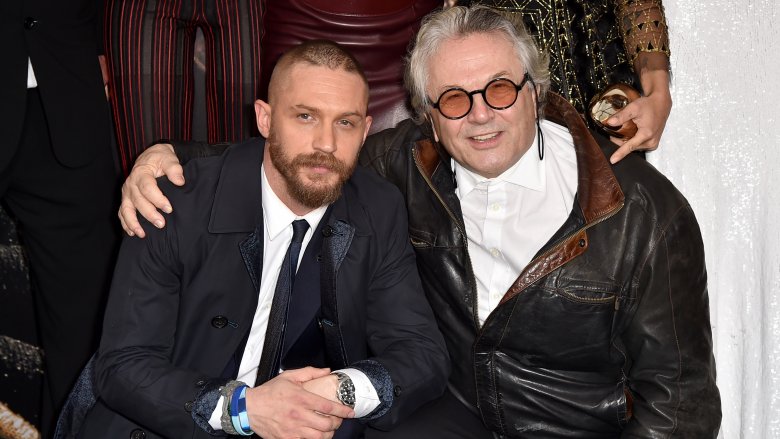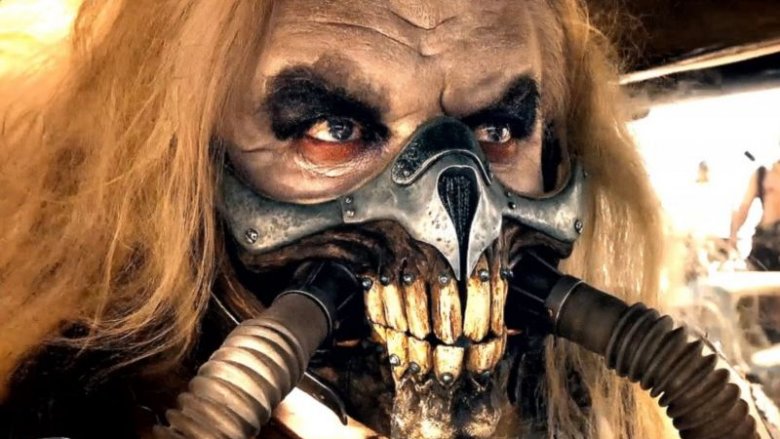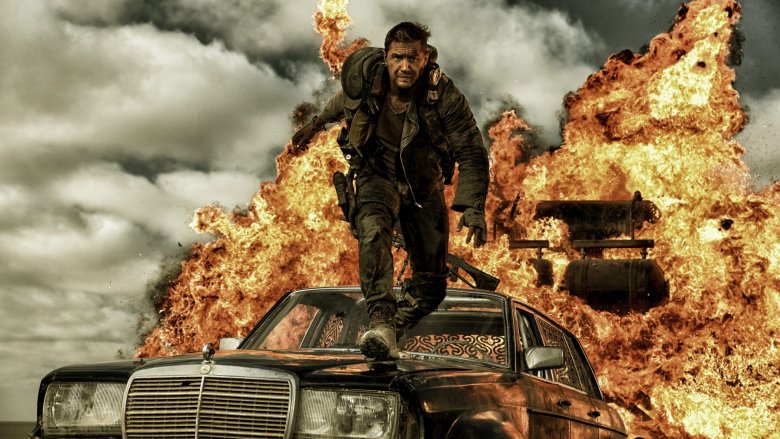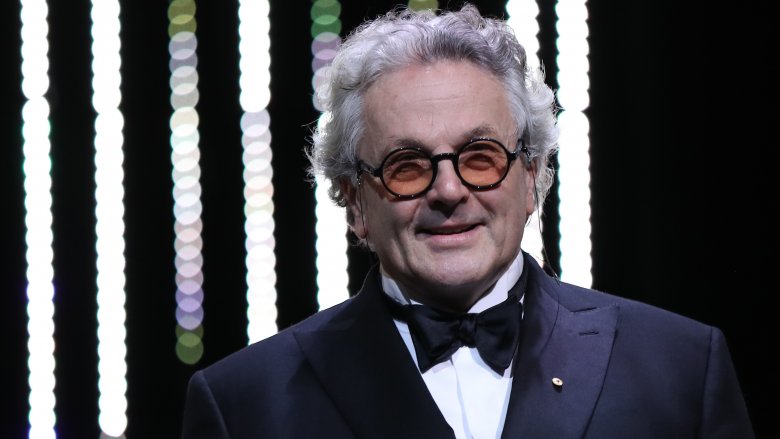Why Another Mad Max Sequel Might Never Happen
Thirty years after Mad Max Beyond Thunderdome hit theaters in 1985, seemingly ending the trilogy following the post-apocalyptic adventures of Max Rockatansky (Mel Gibson), writer-director George Miller wowed audiences everywhere with the fourth installment in the series, Mad Max: Fury Road.
The Tom Hardy-led sequel delivered a cavalcade of riveting action sequences, clobbering viewers with an onslaught for the senses. When all was said and done, Fury Road was a critical win for Miller and Warner Bros. With a global box office revenue of roughly $400 million and six Oscar wins, it felt like a no-brainer that a sequel would make its way to theaters sooner than later.
The movie's success cemented Hardy as Mel Gibson's rightful successor, introducing Max to a whole new generation. Charlize Theron's turn as Furiosa was a kick to the groin of the male gaze-saturated landscape of action films — and definitely gave Max a run for his money. With two completed scripts in the can, it wasn't a matter of if George Miller would make a sequel, it was a matter of when.
But now it seems the future for Max and Furiosa is all up in the air. Miller is locked into a lawsuit against Warner Bros. over a slew of financial grievances. With everything coming to halt, fans everywhere are wondering: Will we see the saga continue? Let's take a closer look at why there may never be another Mad Max sequel.
A bitter court battle
When news hit that George Miller had taken Warner Bros. to court, fans were immediately seized with worry over the possibility that we'd never get another Mad Max movie. Again, Miller already has two scripts in the can, and in 2017, Tom Hardy confirmed to Collider that Mad Max: The Wasteland was still happening. Naturally, that progress has been stalled for the time being.
According to the litigation, Miller's production company Kennedy Miller Mitchell claims they were promised a $7 million bonus payment if Fury Road finished under $157 million. Due to the long production and reshoots, Warner says the movie actually cost more than $185 million — a detail Miller blames on interference. As The Sydney Morning Herald reports, "[Warner Bros.] made a series of decisions which caused substantial changes and delays to Mad Max, which led to additional costs and expenses and that [the studio] wrongly took them into account in its over-budget calculation." Miller's stance: this interference caused the delays, which should not be included in the film's final net cost.
"We would much prefer to be making movies with Warner Bros than litigating with them," Miller and producing partner Doug Mitchell insisted, "but after trying for over a year, we were unable to reach a satisfactory resolution and have now had to resort to a lawsuit to sort things out."
How big does a hit have to be?
Even setting aside the lawsuit, there are things to seriously consider before moving forward with a Mad Max sequel. The movie's budget capped off around $185 million, and that's an important number when considering the overall box office earnings the film brought in. $379 million isn't anything to scoff at, but these earnings are on a global scale. When comparing Fury Road's profits to a movie like Black Panther — which Variety reports earned $1 billion in just 26 days — Fury Road's profit margin looks decidedly less impressive.
Part of this issue may be due to the simple fact that Fury Road didn't get a theatrical release in China. It's also a safe bet that Warners would at least attempt to address that gap with any Mad Max sequel. But would that help bump up revenues? For a Fury Road follow-up to make sense on a financial level, Forbes reports that "it would have to be a lot cheaper than the last one and still pull down similar grosses to resemble a breakout sequel."
But would a cheaper Mad Max movie be worth the price of admission?
Max isn't a cheap date
If the lawsuit between George Miller and Warner Bros. ends up getting resolved in a timely manner, the production budget for any prospective sequel would still be a glaring issue. Aside from the fact that the working relationship between Miller and Warners would most certainly be tarnished, the profit margin from budget to box office revenue is a real factor in any big studio moving forward with further installments in a film series. The Divergent franchise is a great example. Variety reports that Lionsgate has ditched plans for a sequel, with Starz pivoting the project into a TV series instead.
A Mad Max TV series could definitely be a viable option. But with the possibility of Miller's coveted franchise expanding, the special effects and location budget would expand with it. It took over a decade for Mad Max: Fury Road to dig itself out of development hell — with both Mel Gibson and Heath Ledger signed on at various points in time to play Max — and one has to wonder whether Miller and company would be in for a similar ride with any future Mad Max projects. Between the special attention to the movie's grandiose practical effects, stunt budget, and talent payroll, one can only speculate that making a cheaper, and still worthwhile, sequel would be quite a challenge, indeed.
It's only practical
One of the many ways to lower production costs would be for the effects team to go all-in with CGI. But while digital effects have come a long way, there's a visceral gritty component to every Mad Max movie. The car crashes are in your face and the explosive action hits a visceral nerve because all the moving parts witnessed onscreen were actually moving, live and in person, while the cameras rolled.
Needless to say, Mad Max: Fury Road sert a new benchmark. This doesn't mean computer-generated effects weren't used to dial things up to 11, but as The Verge notes, "the CGI work primarily served to enhance what was shot on camera — extra vehicles and people are composited into the sides of some shots, while other CGI work adds depth to the frame in other scenes."
"The reality is that there's 2000 VFX shots in the film," visual effects supervisor Andrew Jackson told FX Guide. "A very large number of those shots are very simple clean-ups and fixes and wire removals and painting out tire tracks from previous shots, but there are a big number of big VFX shots as well." An incredible amount of hand-crafted work went into making Fury Road happen, and any sequel would come with expectations to push that envelope further — expensive expectations.
The clock is ticking
There's no sign that George Miller's career is close to ending, but lawsuits like the one he's currently involved with can take years. Take Peter Jackson's similar litigation with New Line Cinema over his Lord of the Rings movies, and New Line's subsequent legal battle with the Tolkien Trust, as examples. As Collider explains, "The lawsuit was seeking $150 million from New Line over claims that the trust had not received any gross-profit participation payments for the three films that originated from the Lord of the Rings trilogy."
Once things were settled, New Line and MGM put a fast track on production of The Hobbit films — and a fair share of behind-the-scenes chaos resulted in clunky dialogue, stunted action sequences, and a bunch of messy special effects. Timing and schedules are everything. Mad Max is George Miller's baby — he's written and directed every installment to date — and while this is ultimately his story, one has to wonder if he'd be the one stepping behind the camera if and when another movie gets the green light. Considering the epic amount time and effort that went into making Fury Road happen, concerns like these become more worrisome as the years wear on.
Combustible chemistry
Collider reports Tom Hardy is signed on for three more Mad Max movies. According to MovieWeb, George Miller's two finished scripts are allegedly inspired by the backstories he created for Max Rockatansky and Furiosa during the production of Fury Road. Fans may be excited to return to this post-apocalyptic hellscape and Hardy's a worthy actor to play the character Mel Gibson helped create, but Charlize Theron's performance as Furiosa ended up packing an unexpected punch. Hardy may have been the film's star, but Theron stole the show.
"I love that character, I loved working with George Miller, and if he was ever on board, yeah. I mean, I would be in right from the beginning," Theron told ScreenRant about returning for a Furiosa solo film. "With him, it's kind of like working with Jason Reitman. I wouldn't even need to see a script, I trust him that much and it's great when you have that with a filmmaker."
Theron may have loved working with Miller, but her on-set experience with Tom Hardy is a different story. "I'm not saying that they were seething right through, but the trajectory of the characters can't help but seep into the work," Miller told WSJ Magazine. "When they first meet each other, they're trying to kill each other. As the two characters come together out of necessity and rather reluctantly, they have to find a degree of trust. And to some extent that was the trajectory of their relationship as well."



